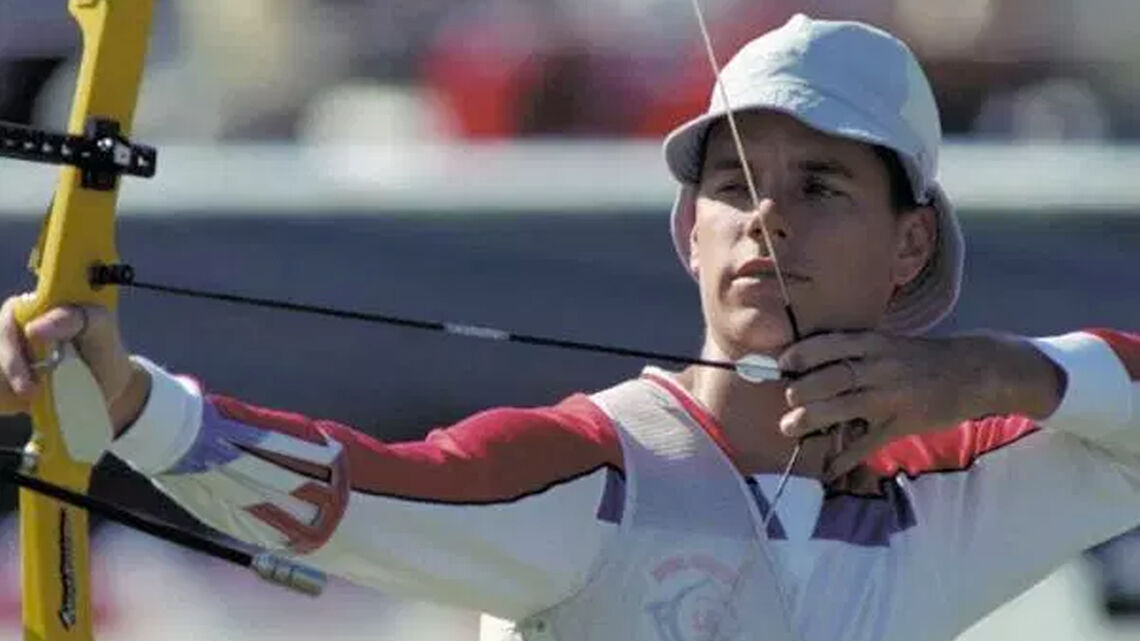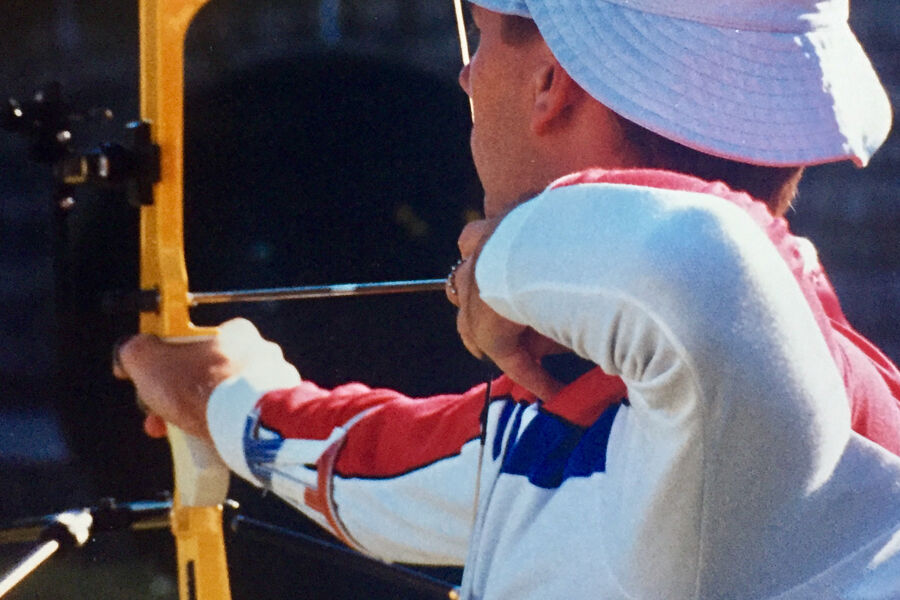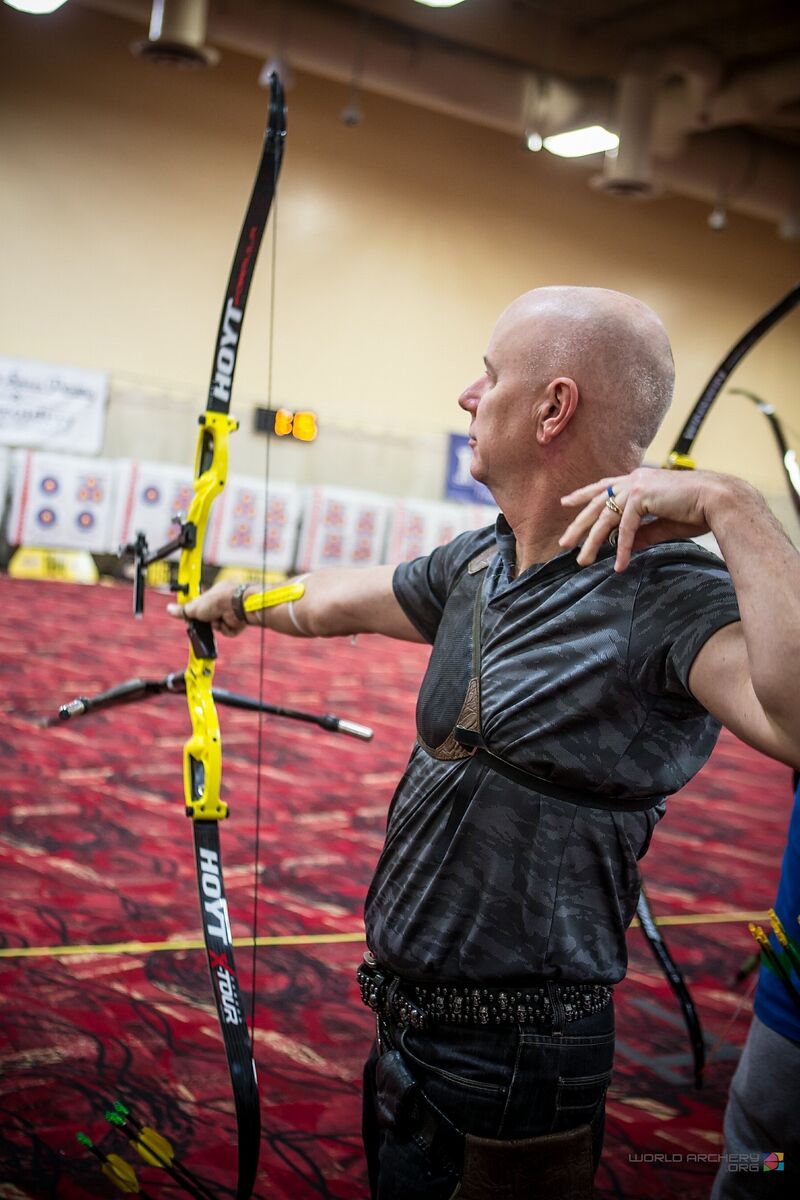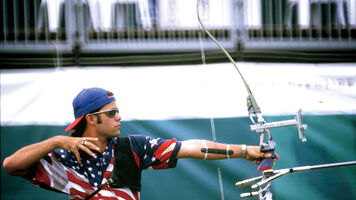“It was me versus the field” – 30 years on from Jay Barr’s Olympic gold

The Seoul 1988 Olympic Games was the last before the introduction of the head-to-head format. Instead of just two archers stepping into the arena to shoot for gold, there was a small field of archers contesting the title.
“There was only eight men on the field and a huge scoreboard. Actually, I wasn’t actually watching the scoreboard, I was looking at my score versus the best score from the other seven guys each end. In my mind, it was me versus the field,” said Jay Barrs.
“When we were down to the last end of the round at 90 metres, I knew I was either one ahead or even with the best the field had to offer.”
Jay shot fast, taking 50 seconds for his three arrows at maximum. He finished with seven, nine and 10 for his last three arrows.
He coach, Dick Tone, walked up to him with tears in his eyes, and said: “I think you just won the gold.”
Jay asked him to be more specific.
“Well, you had a one-point lead over Park Sung-Soo, but he has only shot one arrow,” said Dick.
“What’s taking him so long?”
“You shot your last three arrows in 31 seconds!”
Park had shot a seven with his first arrow of the last end, meaning he needed two 10s to tie with Jay. The Korean athlete’s second arrow was a nine.
Jay Barrs had won the Olympic Games.
“I feel proud, happy, thrilled, thankful to those who helped me achieve it, especially my coach Dick Tone. Without him I would not be an Olympic Champion,” said Jay.
“It also freaks me out that it was 30 years ago!”
Much has changed in sport over those three decades, in equipment, organisation and attitudes to, well, beer. The Seoul Olympics were held prior to alcohol being added to the anti-doping banned substance list. (That happened in 1993.)
“When you were selected for drug testing they had water, pop and beer to drink so you could rehydrate before giving your sample,” said Jay.
“When Darrell, Rick and I were tested after winning the silver medal in the team round we were not going to pass up free beer.”
“So even though we were hydrated we crossed our legs and drank beers until our bladders forced us to give a sample.”
“Ah, the good old days.”
They were the days before aluminium risers and the most modern of arrows – Jay won with a Hoyt TD4 magnesium handle and Easton ACE shafts – and when carbon-core limbs had only just been introduced.

“The cast magnesium was not as straight or consistent as the machined aluminium riser we shoot today. However, it had the best feel when you shot it. Very soft but solid,” said Jay.
“We did not get as wrapped around the axel about the bow and limbs being perfectly straight as some folks do today. If the limb tips were straight and the riser was in a string width or two of straight, and it was not changing from shot to shot, that was close enough.”
The competition format used at the Olympic Games in 1988 was a full 1440 Round for qualification, followed by eliminations phases in the form of a Grand FITA.
It consisted of a number of passes of 36 arrows, nine arrows each at 30, 50, 70 and 90 metres. At the end of each pass, a certain number of archers were eliminated from the competition.
“It was the first attempt to make Olympic archery more spectator friendly,” said Jay. “I loved the round.”
“You only had to shoot nine arrows before you got to move on to a new distance. It was easier to concentrate for only nine arrows and then move. I also liked the pressure it put on the shooters.”
Archers had to be good at all four distances, including the critical longest target at 90 metres that finished each pass, because there was little margin for error to make a mistake.

Jay sat in 13th after the first 36-arrow elimination, which cut the field to 18.
“I remember exactly what I thought… ‘Oh shit! This is not good’,” said Jay. “I talked with Dick and he told me to relax my bow hand. Once I did that, everything fell into place.”
He was fourth in the second pass, second in the third and then won the last to take the gold medal.
“The field crew hated that round as they had to move the targets after every three ends. Many of the established archers did not like it either; we went from shooting a double FITA, total score over 288 arrows wins, to 36 arrows determining the champion,” said Jay.
“At the time it was like taking a bunch of marathon runners and making them sprinters.”
Four years later, in Barcelona in 1992, the head-to-head concept would be introduced to the archery competition at the Olympic Games. It’s remained staple ever since, with a tweak to the set system in 2012.
Jay competed in Barcelona, too, finishing fifth individually. His gold medal Games was the only to use the Grand FITA.
Given the unique format in an era of change for the sport, where does Jay position his own performance?
“I won, didn’t I? Do you think a guy who wins the Olympics but wasn’t the highest qualifier feels he wasn’t the best archer there,” he said.
“If winning the gold doesn’t determine the best archer at an event then what does?”











